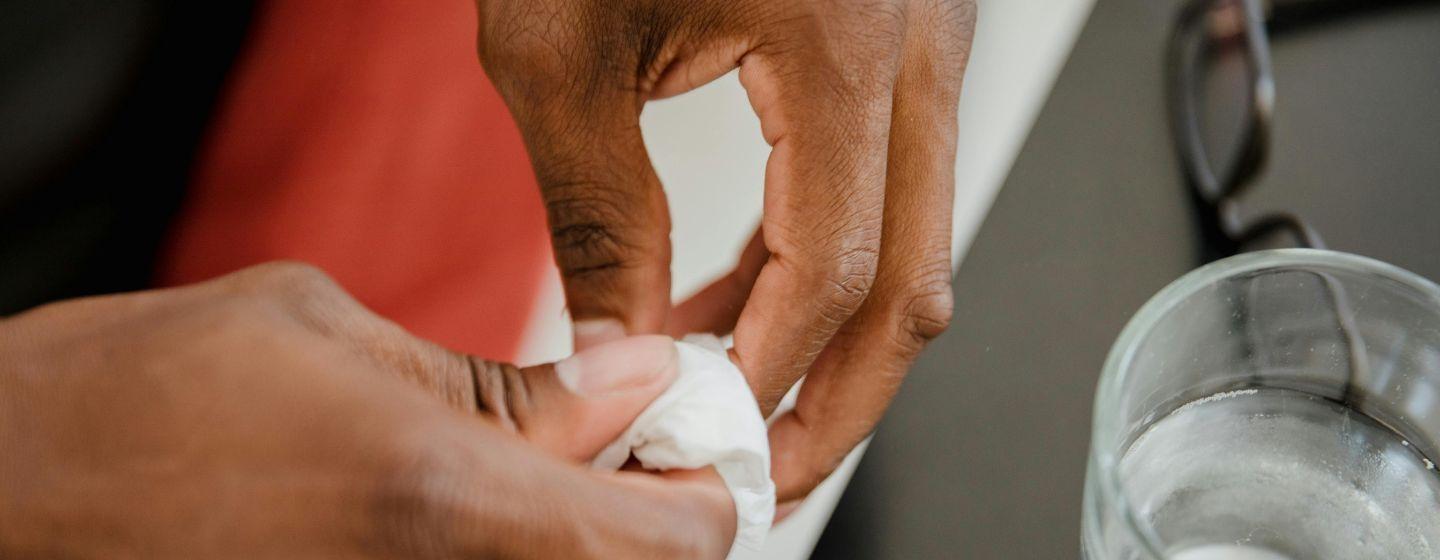The Science Behind Paper Cuts


The winter holidays are over, and that means it’s time to get back to school and back to work.
It also means that even in a high-tech world of laptops and digital devices, there is still a lot of paper being shuffled around. And that provides plenty of opportunity for the most annoying of injuries, the paper cut.
“I got a paper cut at home. I thought, this cannot be,” Kaare Jensen, a physicist at the Technical University of Denmark, told NPR. “Now I have to understand what’s going on.”
And it turns out, Jensen and his colleagues discovered the perfect conditions for a paper cut depend on the right combination of material, thinness of paper and physics.
Actually, make that a combination of four things. You also need a finger to cut. Yep, there’s a lot going on.
To understand the science of paper cuts, the team first confronted an ethical problem.
“We consider[ed] trying to recruit subjects, but it’s unethical, and it’s really hard,” said Jensen. “No one volunteers.”
So the group essentially created a mini robot to slice into ballistic gelatin, which became a stand-in for real people. It’s the same rubbery gel that’s used to simulate human and animal skin when studying possible injuries from dangerous environments and weapons.
Then the team of three researchers turned the machine on and began slicing.
Ouch!
First, there is a clear “Goldilocks zone” when it comes to a paper’s width. I know that’s not the best term when it comes to paper cuts, but it fits. If the material is too thin, like tissue paper, it simply isn’t strong enough and bends when pressure is applied. If the paper is too thick, like a notecard, there’s too much surface area and it won’t cut through anything.
But the closer a paper is to 65 micrometers wide, the more primed it is to slice you. Think sheets of a newspaper, Post-it notes, magazines and some printer paper used in older model dot-matrix printers.
Material and thickness aren’t the only factors involved in paper cuts. Researchers also discovered that, just like a knife or sword, an angled motion is more likely to result in cuts than a straight-on approach to a target. That’s why turning a page may end up hurting you, while dropping a magazine on your finger will not.
There’s also a good reason why paper cuts hurt so much. They happen on really sensitive parts of our bodies, such as fingers, lips or tongue. The nerves on those body parts are good at sensing pressure, temperature and, yes, injury. In addition, because those body parts provide so much information, our brains have specialized areas to receive signals coming from those areas. That makes these particular injuries all the more painful.
And because fingers are used all the time, healing a cut on a finger is more challenging because it tends to reopen as the finger moves. That brings the pain back again and again.
The best advice for a paper cut is to wash the wound with soap and water to prevent infection. Apply a little first-aid cream and, if possible, cover it with a bandage to cushion the wound, prevent infection and limit reopening.
The findings from Jensen’s study are published in the journal Physical Review E.
For more stories about the fascinating world of science, visit pbsnc.org/blogs/science.